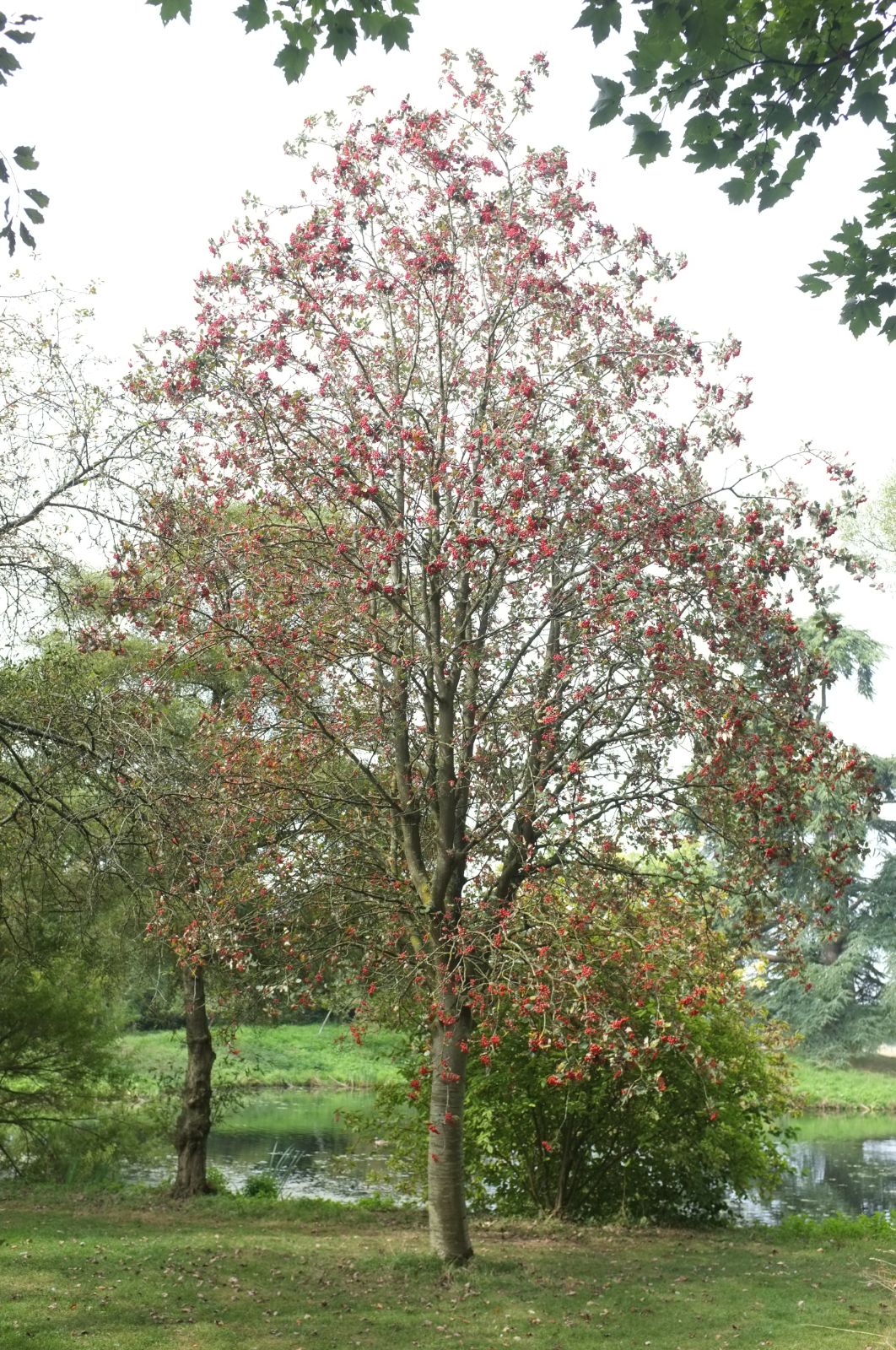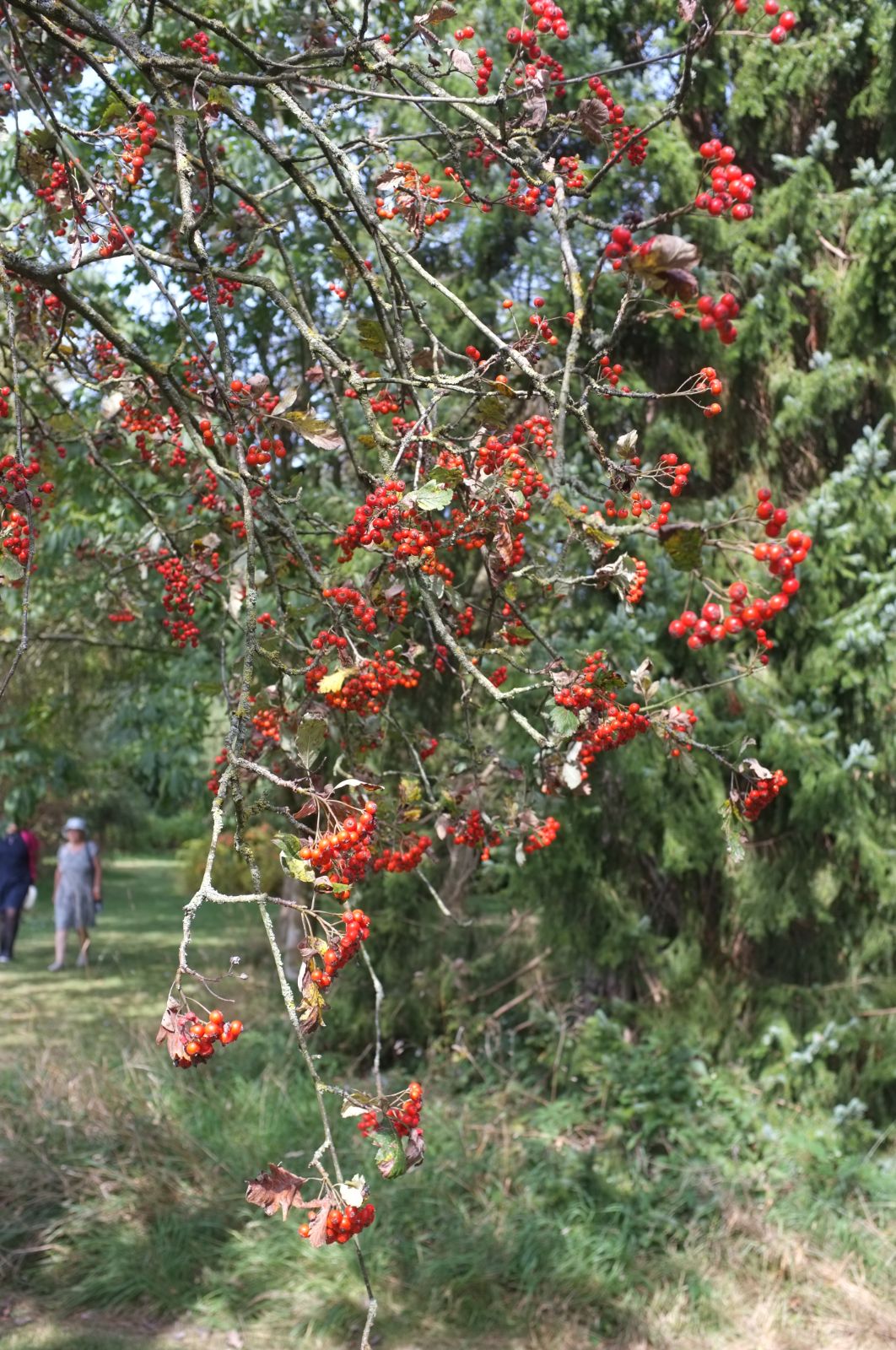Hedlundia hybrida
Credits
Article from Bean's Trees and Shrubs Hardy in the British Isles
Recommended citation
'Hedlundia hybrida' from the website Trees and Shrubs Online (treesandshrubsonline.
Genus
Synonyms
- Aria hybrida (L.) Beck
- Aria pinnatifida (Hook.) Lavallée
- Ariosorbus hybrida (L.) Mezhenskyj
- Azarolus pinnatifida Borkh.
- Crataegus fennica Kalm
- Crataegus hybrida L.
- Hahnia pinnatifida Medik.
- Lazarolus pinnatifida Borkh.
- Pyrus aria subsp. fennica (Kalm) Syme
- Pyrus aria var. pinnatifida Hook.
- Pyrus auriculata (Pers.) DC.
- Pyrus hybrida (L.) Sm.
- Pyrus pinnatifida Ehrh.
- Pyrus pinnatifidia Borkh.
- Pyrus scandica var. fennica (Kalm ex L.) Duthie
- Pyrus scandica var. pinnatifida (Ehrh.) Duthie
- Pyrus semipinnata Roth
- Sorbus aucuparia subsp. hybrida (L.) Bonnier & Layens
- Sorbus aucuparia var. hybrida (L.) Pers.
- Sorbus auricula Dippel
- Sorbus auriculata Pers.
- Sorbus fennica (Kalm) Fr.
- Sorbus hybrida (L.) L.
- Sorbus pinnatifida Bean
- Sorbus semipinnata Hedl.
- Sorbus semipinnata eusemipinnata Kárpáti
Editorial Note
The text below is that of Bean (Bean 1981) who discussed this taxon under the name Sorbus hybrida. We have created this hybrid article – Bean’s text under the correct modern name, with appropriate synonymy – whilst we await sponsorship to enable a full revision of this genus to be written. We are reorganising Sorbus sensu lato articles to enable a new revision of Sorbus sensu stricto to commence in 2023, and to bring the nomenclature of this complex group of plants up to date in line with modern treatments.
Bean’s discussion of Sorbus pseudofennica, which he placed beneath his discussion of S. hybrida, may now be found under Hedlundia pseudofennica.
TC, September 2023.
A small tree with spreading branches, forming a roundish irregular crown; branchlets grey-woolly when young, brown and more or less glabrous by autumn, sparsely lenticellate; winter buds ovoid, blunt, 1⁄4 in. or slightly more long, basal scales brown, almost glabrous, the upper ones woolly. Leaves lobed and partly pinnate, broadly elliptic or ovate-elliptic in general outline, mostly broadly obtuse at the apex, 3 to 31⁄2 in. long and 2 to 21⁄2 in. wide under the inflorescence but larger on sterile shoots. They are lobed at least in the upper part, the lobes increasing in length downwards towards the base of the leaf, where there is usually one pair of free leaflets on those of the stronger flowering shoots, but sometimes two on strong shoots, while the leaves on weaker shoots may be merely lobed; lobes and free leaflets edged with sharply pointed teeth. The leaves are darkish dull green above, whitish tomentose beneath; petiole 5⁄8 to 11⁄8 in. long. Flowers in May in clusters 21⁄2 to 41⁄2 in. wide, white, about 5⁄8 in. across. Petals hairy inside. Anthers yellow. Styles usually three. Carpels free at the apex. Fruits globose, ripe in October, 1⁄2 to 5⁄8 in. wide, deep scarlet crimson, sparsely dotted with lenticels; calyx lobes inflexed, narrowly triangular, becoming fleshy only when the fruit is fully ripe, and even then horny at the tips.
A native of southern and southwest Scandinavia, rarely far from the coast. Linnaeus, who described this sorbus in 1762, considered it to be a hybrid that behaved like a species, and in this he has been proved right, for it is now known that S. hybrida normally reproduces itself apomitically, i.e., produces fertile fruits without fertilisation, and then breeds true, although of undoubted hybrid origin. Linnaeus suggested S. aucuparia and S. intermedia, but the objection to this hypothesis, which was long accepted, is that hybrids of this parentage have been raised artificially and are quite different from S. hybrida. It is now thought more likely that S. hybrida derives from hybridisation between S. aucuparia and S. rupicola (q.v. under S. umbellata).
S. hybrida was probably introduced in the last century, but the first recorded introduction was by the Earl of Ducie to his garden at Tortworth in Gloucestershire early this century; it seems to have been little known in gardens until the Hon. Vicary Gibbs exhibited it in 1920 under the strange name of “Pyrus firma”, the specific epithet being perhaps the result of misreading the word fennica on a label. It was later correctly identified as Pyrus pinnatifida, but was given by Arthur Osborn the varietal name ‘var. Gibbsii’, no doubt to distinguish it from the sorbus then commonly grown as Pyrus pinnatifida, which was wrongly named and is in fact a form of S. × thuringiaca (q.v.). ‘Gibbsii’ is certainly very distinct from this sorbus, but does not differ from the normal wild S. hybrida except perhaps in having a trifle larger fruits. S. hybrida has also been grown wrongly as S. meinichii.
S. hybrida received an Award of Merit in 1920 as “Pyrus firma” and in 1953 as “S. pinnatifida” ‘Gibbsii’.
S. pseudofennica E. F. Warburg – Very similar to S. hybrida but a smaller tree with shorter leaves, yellowish green above, rather thinly tomentose beneath, and with smaller flowers and fruits. It is known only from Glen Catacol in the Isle of Arran, Scotland, and is thought to be the result of hybridisation between the triploid S. arranensis (q.v. under S. minima) and S. aucuparia. It was described in 1957.
From the Supplement (Vol. V)
specimens: Westonbirt, Glos., Clay Island, pl. 1937, 60 × 31⁄4 ft (1980) and, pl. 1935, 31 × 31⁄4 ft (1982); Newcastle House, Glam., 34 × 33⁄4 ft (1980); Thorp Perrow, Bedale, Yorks., 41 × 31⁄4 ft (1981).


